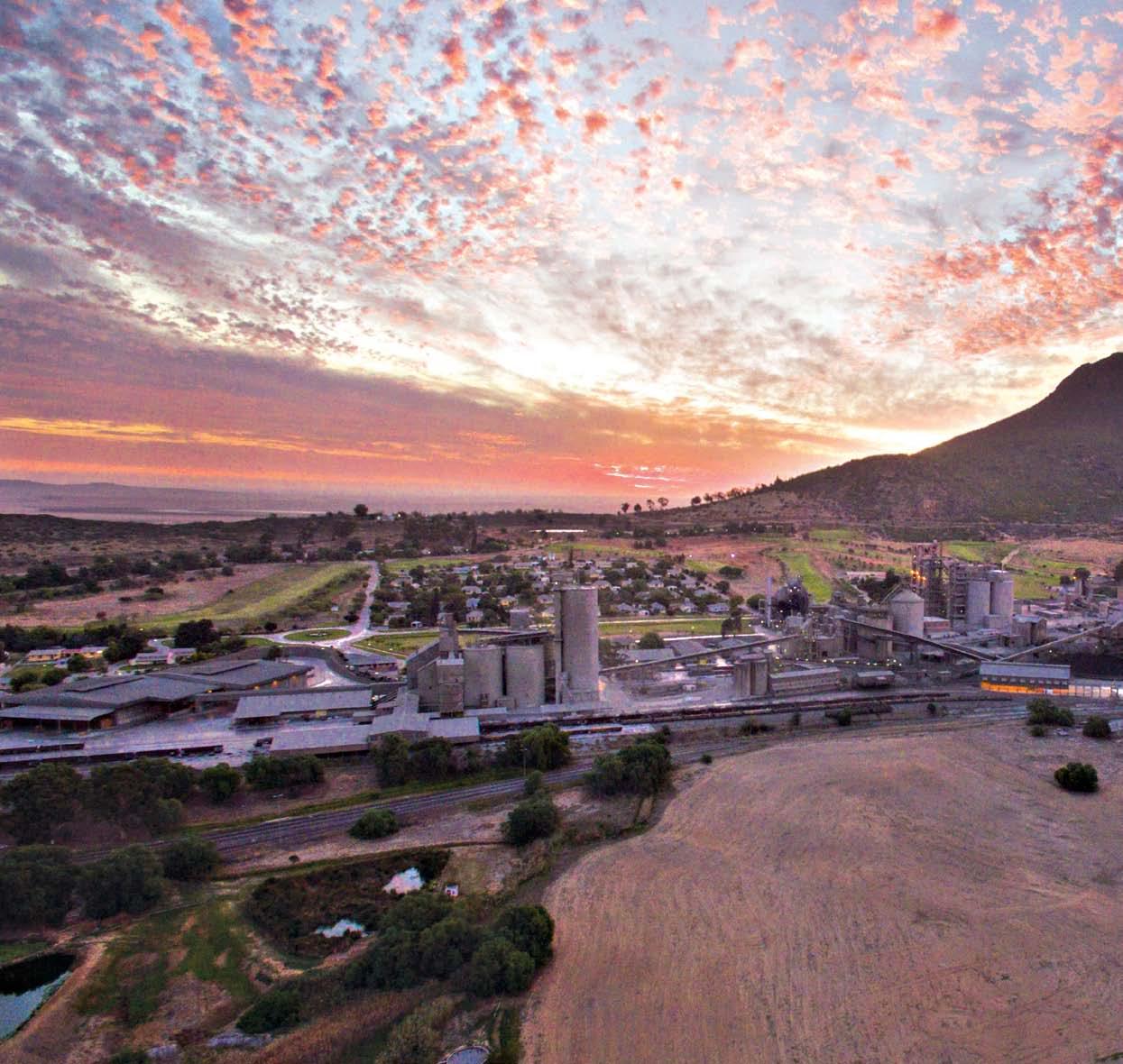
12 minute read
Cover Story
ppc – partnership, empowerment, & local production
As South African as… De Eerste Cement Fabrieken Beperk… or PPC to you and me. Literally South Africa’s first cement production company, PPC started out life in 1892, named purely for its place in the order of things. There simply isn’t a South African alive who has not grown up, worked in, healed in, learned in, walked on, walked under or sat on something made with PPC Cement. The ubiquitous PPC elephant is as South African as…
Advertisement
Another very South African characteristic is our ability to survive, adapt and thrive under both adverse and ideal conditions. And as Johan Vorster, Head of PPC Coastal Business Unit points out, PPC’s success owes much to its uncompromising attitude to quality: “PPC has a legacy in South Africa, which includes adapting and changing our operations to continuously streamline our operations and create a robust ability to include and develop the communities we operate in and around.”
AdApt And thrive
With its long history in South Africa, PPC has the institutional knowledge and the skills to best adapt to constantly shifting demands: “It is quite interesting that our decision to shut down our Port Elizabeth kiln led to the impression that our area operations as a whole had shut down,” explains Vorster.

Johan Vorster, Head of PPC Coastal Business Unit

“Quite the opposite is true: we shut down the kiln as part of our strategy to meet our country’s emission standards.” The option to transport clinker by rail from PPC’s North West Slurry factory put a stop to the older kiln’s emissions entirely, and allowed for the positive R60 million investment into their new Port Elizabeth material landing facility, employing 34 local residents.
QuAlity supply ChAins in every region
Supplying materials to its Eastern Cape operations is essential to its ongoing commitment to providing access to quality cement and cement products across South Africa. This advanced exercise in logistics, coordinates delivery not only all over South Africa, but to Botswana, Zimbabwe, Rwanda, the Democratic Republic of Congo and Ethiopia, is a testament to the company’s legacy, presence, place in its communities and incredible track record.
“PPC’s customers in the entire Country have access to our laboratories, which is an essential component of building with cement and concrete,” continues Vorster. “We have Technical laboratories at all of our factories to ensure that we provide consistent quality products to the market and also provide value added services like mix designs, application onsite training to our customers.
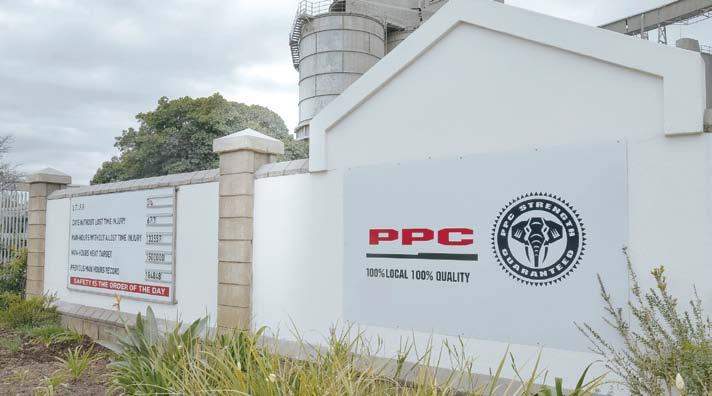
“With so much imported cement in South Africa, our customers are more vulnerable than ever that standards can be compromised. Imports themselves have no technical backing, but of course they can be cheaper.” by way of example, vorster points to ppC’s 360 degree marketing programme, which sees brick making skills transferred to local residents, enabling these end-users to become producers themselves. “It is now more important than ever that traceability of product through the whole supply network be transparent and clear. our laboratories are essential in supplying this function.” It is important to note that ppC also has the skills to ensure projects like the wind power installation – for which the quality and composition of product is nonnegotiable – are deliverable to any part of the country.
lOCAl IS ESSENTIAl
the extremely welcome news of government action in full support of our local cement producers cannot be celebrated enough. the impact of cheap, largely unregulated imported cement has been dire. the need for correction has been clear, and finally government has agreed that all public sector projects are required to use locally produced cement, to the exclusion of imported cement. there is wide agreement that this is a fair solution.
“ppC, as a local producer, is at the centre of this messaging,” says vorster. “We as industry must do our part to ensure this comes to pass in a meaningful way, that is helpful also to local emerging contractors as well.” vorster acknowledges that when price is the dominant choice factor, imports have an advantage, unfair or otherwise.
BuIlDINg A STRONgER INDuSTRy
“With local designation, if a brick maker is buying cheap imported cement; those bricks cannot be used in any public construction project. Now, to level this playing field, and ensure that this message is transmitted accurately, and is adequately enforced,” explains vorster. “As industry, we have to play a strong role in establishing practical and meaningful controls, rules and recognisable marks of compliance,” he continues. vorster emphasises the importance that the cement industry and the construction industry immediately start to play a central role in making the designation work from a practical stance. Equally, the role of the media is essential in distributing it and playing the role of witness to its establishment, implementation and keep a watchful eye out for deviation. the establishment of Cement & Concrete SA (CEMCoNSA) is especially welcome at this time. “this consolidation is long overdue” enthuses vorster. “We can now truly bring our industry to maturity, and exercise proper influence at levels of government and be a force for good in transferring skills, setting standards and bringing all players into the fold.” ppC rSA Managing director, Njombo lekula, has played an active role representing the cement industry through the Concrete Institute, and the consolidated advantage of CEMCoN-SA is the strong leadership necessary for it to thrive. vorster welcomes early support being shown by the Western Cape government: “We have had such positive reinforcement from department of Economic development and tourism,” says vorster. positive discussions with the head of department, Mr Solly Fourie, has resulted in a commitment to drive adherence to the national designation of local cement through Western Cape’s municipalities.“ partnership is key to moving the whole construction sector forward. positive signs abound in terms of projects, transparency, skills management and now procurement. “We have to drive the commitment of every stakeholder to using local products, and managing the ability to do so effectively. ppC is in a top position to contribute to this, with multiple channels, and overall offering,” says vorster. before ending our interview, vorster emphasised two other top priorities: • CO2 reduction in cement production – achieving zero emissions by 2050 • Upskilling through education and training
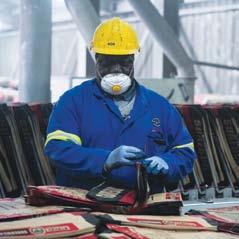
“there are many wonderful advances we must continue to champion in South Africa. Women in construction are very close to my heart; we have supported many woman owned initiatives in the Coastal region, including a building Stokvel for women.” say vorster. “ppC has always thrived on optimism and continues to do; South Africa thrives when we promote a can-do attitude coupled with upskilling through education and training.” n
t
The plant is a hub of economic activity
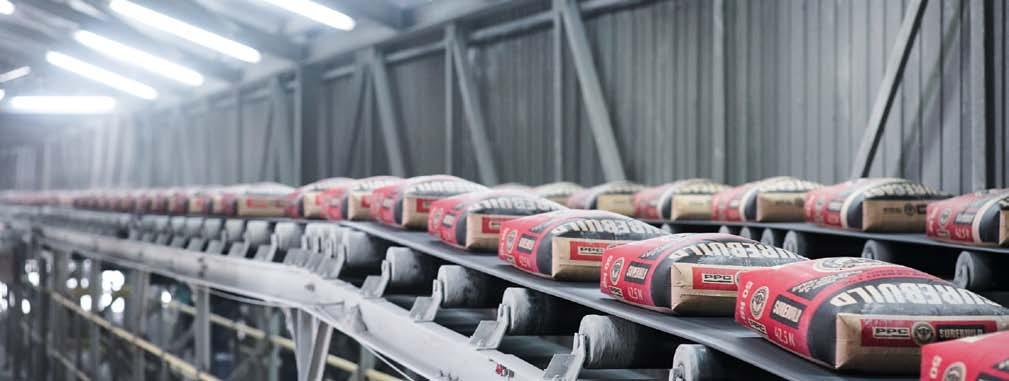

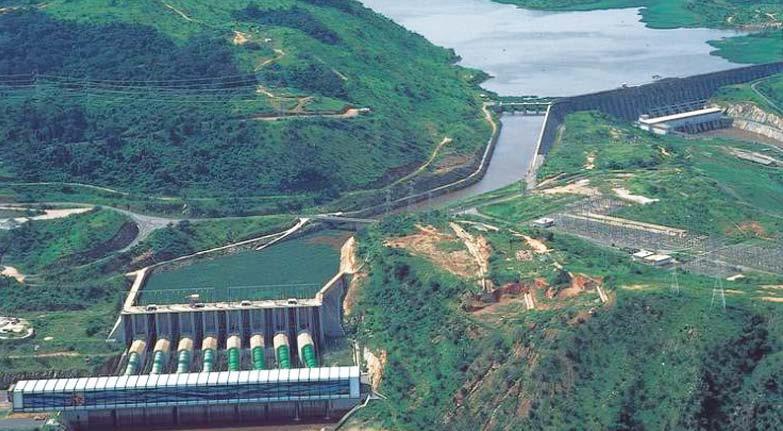
an engaging market for strategic growth
The African Continental Free trade Agreement (AfCtA) kicked in on January 1 2021, and is a sea change for companies expanding their African operations. West Africa represents some of the continents’ leading centres of growth for the construction industry.
In Nigeria alone, active construction projects represent a collective value of uS$54.2 billion and comprise 28 percent of all West Africa’s construction projects. Nigeria’s construction industry has a projected value of uS$28 billion by 2024. demand for building materials in West Africa has never been greater, driven by both the mining and construction sectors, and the need for innovative solutions for greener concrete tops the list. Construction projects on the continent are getting bigger and more complex. A rising middle class combined with strong economic growth is driving urbanisation as never before. Activity in infrastructure is driven in support of this, and in both cases, funding models are becoming as innovative as the materials driving a greener economy. .
gETTINg IN ON IT
Accessing this vibrant market place is in itself an important business, and both information and networking remain the top routes in. once there, questions that seem answered in one market, may need an entirely different answer in another. understanding the region’s priorities, the role-players and stakeholders, the logistics and trade relationships and the intricate network required to bring a project to completion demands a very specific approach to project management. where possible – forward procurement. Indeed, the current dip in material prices is an alert that project managers would do well to pay attention. the bottom line of growth expectation brings to anticipated 5 percent of the coming two years to 2023.
RISINg COSTS – BuIlDINg IN MATERIAlS AND lABOuR
In rapidly markets it is not unusual to encounter rapid escalations in the cost of materials and labour, and to maintain profitable margins requires a great deal of forward planning – and
DEMAND fOR gREEN CEMENT IN wEST AfRICA
demand for green cement in Africa will provide an increasingly lucrative market over the next few years due to growing trends in sustainability and energy efficiency for both buildings and infrastructure the global market for green cement is expected to grow to uS$38.1 billion by 2024 from uS$14.8 billion in 2015. green cement reduces the carbon footprint of construction activities through the substitution of cementitious industrial wastes, such as fly ash from coal-fired power plants and slag from the steel and iron processing industry, as a replacement for traditional cement. other attributes of green cement and concrete include mitigation of transport Co2 contributions, as well as the associated outputs of aggregates and admixtures. the coming years will witness an increase in demand from local African marketplaces for more sustainable products in the local built environment.
NIgERIA’S CONSTRuCTION INDuSTRy
Nigeria is one of the most attractive markets in Africa for all in the construction sector. In West Africa, of the uS$120bn committed to infrastructure spending across 92 projects, 61 percent is earmarked for plans in Nigeria. the country currently
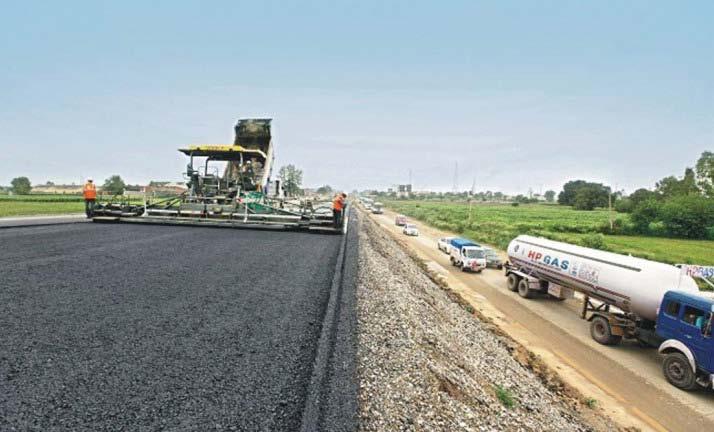
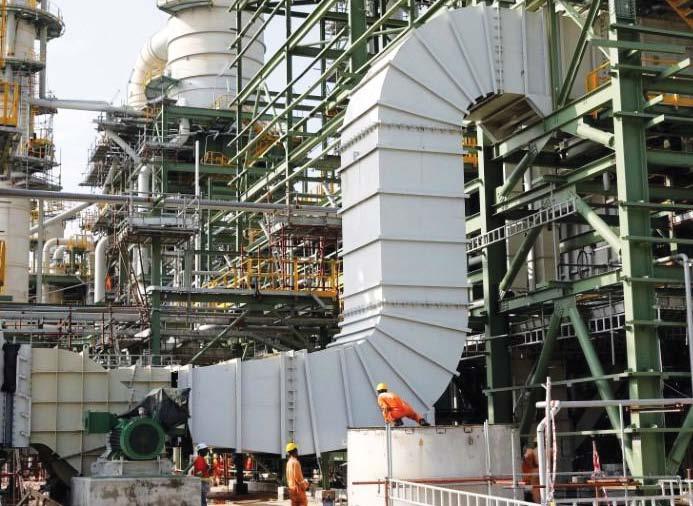
Dangote Oil Refinery
has 68 major building projects with a total capital expenditure of approximately $73 billion, second only to South Africa on the entire African continent. the stabilisation of the naira, the utilisation of new contract structures and an increase in local suppliers are now helping to provide fertile ground for trade. local content, in particular, is playing a larger role in the market, with domestic companies active as both standalone contractors and as subcontractors for foreign firms. While public sector tenders – which have traditionally been the source of major works – remain limited compared to the booming years of the 2000s, the increase of private development in the residential and commercial building segments offers promise. given the size of the Nigerian economy and traditional spend of other African states, however, these figures mask a historical underspend in gross fixed capital formation (gFCF), a category that includes infrastructure projects and land improvements. An average gFCF of 30 percent of gdp is considered optimal for creating a growth-conducive environment, but in recent years, Nigeria has spent just 11.9 percent of gdp compared to a sub-Saharan Africa average of 21.5 percent. Ethiopia, the continental leader, spent an average of 32.8 percent of its gdp on infrastructure over the last decade.
Construction and infrastructure project in ghana
• Rail network, including several rail lines within Ghana and regional lines; a coastal line running from Nigeria through ghana to Cote d’Ivoire; and a North-South line from ghana to burkina Faso • District and regional hospitals project • West Africa Petroleum Hub - proposed • Takoradi Gas Tank Farms • Gas Pipelines – laying pipelines in mining areas around tarkwa • Ghana Trade Fairground Redevelopment • Expansion of Secondary Schools under the Second
Cycle system • Affordable Housing • Accra Marine Drive Tourism Project • Tetteh Quashie Cocoa Museum • National Cathedral • Cape Coast Slavery Museum • Petronia City Project
ghANA uNDER CONSTRuCTION
the construction sector in ghana appears to be performing well, and contributes substantially to gross domestic product (gdp) and employment. For example, the demand for cement,
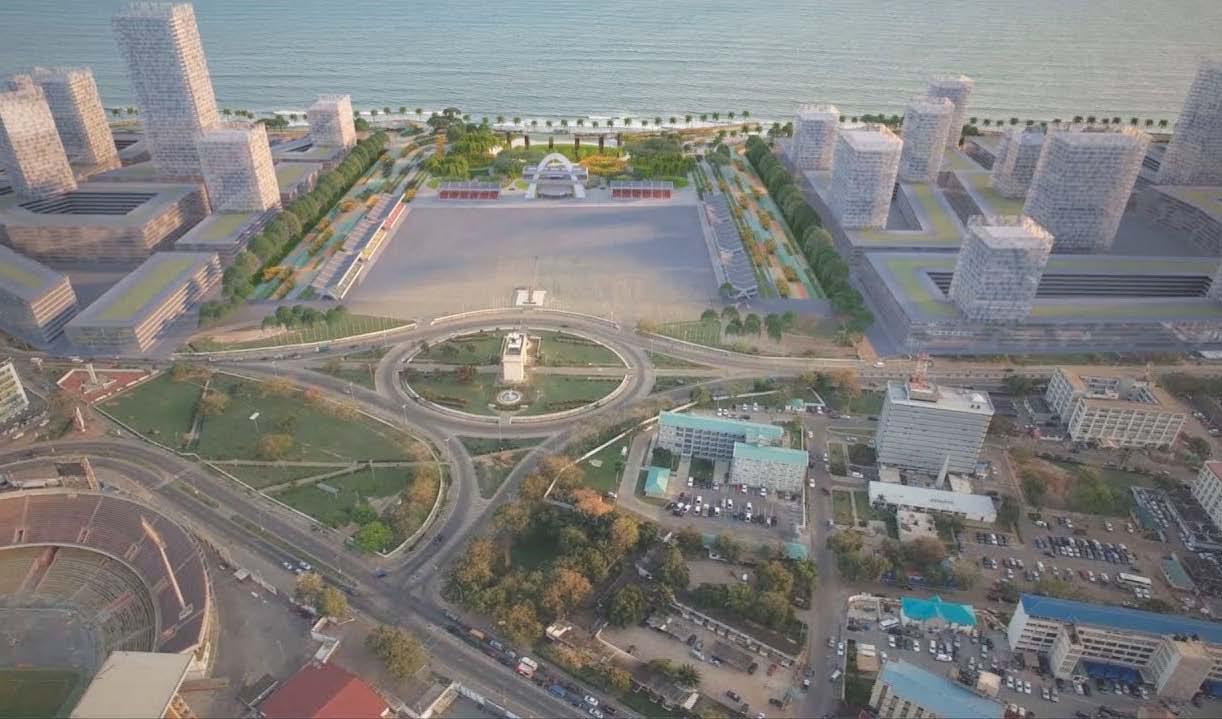
a key indicator of construction activity, is expected to increase consistently from 8.8 million metric tonnes in 2017 to 12.5 million by 2021. the uS$8 billion ghanaian construction sector, which accounted for 18.8 percent of the nation’s annual gdp in 2018, is a central pillar of ghana’s National development plan. provisional estimates released by ghana Statistical Service indicate that the construction industry recorded a growth rate of 18.3 percent year-on-year for the third quarter of 2018. the industry provides employment for approximately 420,000 people and an estimated 2,500 active building and construction contractors currently operate in the ghanaian market. players range from indigenous micro-enterprises and individual contractors to foreign multinational civil engineering and construction giants.
INDuSTRy PlAyERS
the construction industry in ghana is composed of building project consultants, engineers, architects, quantity surveyors, building contractors and artisans. the Chamber of Construction Industry ghana is responsible for governing and regulating the activities of this industry, from advocating to helping find overseas suppliers.
Contractors in ghana are classified under the housing and roads and civil works subsectors. this classification is made primarily based on the company’s financial resources, human resource capacities and level of technology (i.e. type and efficiency of equipment employed). however, there are different classifications for contractors in the housing and roads subsectors. those in the housing subsector are grouped into four classifications, depending on the value of the project to be implemented. please find classification below: 1. Contractors with the capacity to execute projects that are above $500,000 in value 2. Contractors that have the capacity to execute projects up to a value of $500,000 3. Contractors having the resources to implement projects with a maximum value of $200,000 4. Contractors with the means to carry out projects with a maximum value of $75,000.
The business of opportunities for foreign companies
• Construction, maintenance and services for roads and railways. • Rail upgrades and passenger rail transport on selected rail corridors • Lake transportation systems • Air transport operators for domestic and sub-regional services • Upgrading of existing trunk roads • Affordable housing construction • Sale of affordable and durable building materials i.e. fixtures and furnishings n
Find our branches at www.technicrete.co.za

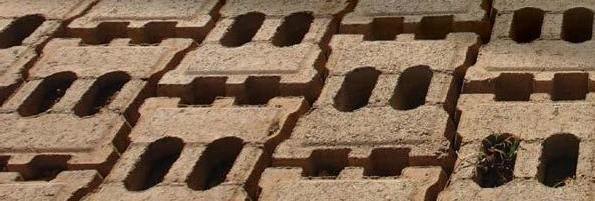
paving | mining | masonry | kerbs | erosion protection | retaining walls | drainage

SUITABLE FOR: • Rivers, Estuaries, Dams, Reservoirs • Areas subject to wave action • Access roads • Parking areas • Stormwater drift crossings SPECIALLY DESIGNED: • Compressed concrete blocks • Interlocking system • Partial taper of each block • Various sizes of blocks available
Technicrete is a subsidiary of ISG, a leading supplier of innovative infrastructure products to the construction and mining markets in Southern Africa.







